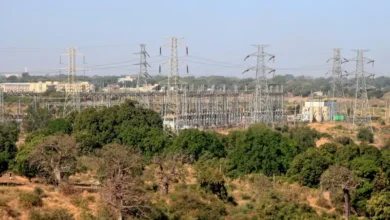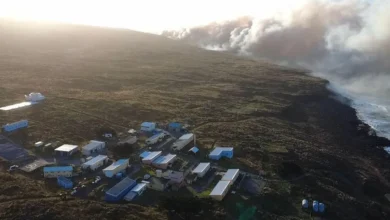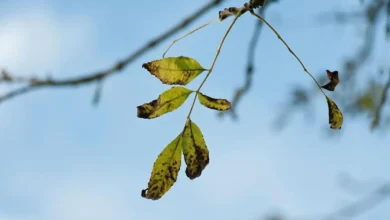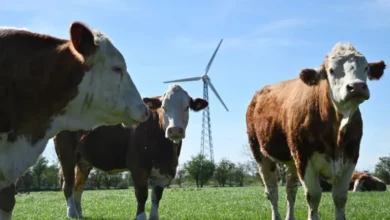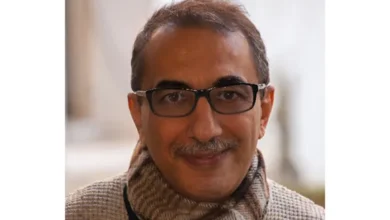Using AI to listen to Jordan’s date palms

Zeid Sinokrot was an unemployed engineer in 2012 when he decided to join the family business, growing dates on a farm outside Jericho.
But his father’s date palms began dying one by one, consumed from the inside by insects that were impossible to see until the trees began to keel over. Four years later, his father sold the farm.
“I knew I wanted to find a solution to the problem,” Sinokrot told Al Jazeera. “Trees were falling, and farmers were afraid.”
The Sinokrot’s farm was under attack from the red palm weevil, a small insect native to South Asia that attacks more than 40 types of palms and causes more than $1bn in losses in the Middle East, Africa, and North America annually. The pests spend 80 percent of their lives inside trees and are almost invisible until it’s too late, leaving farmers with few defences aside from drenching their fields in pesticides as a preventive measure.
But smart farming that uses AI for pest detection is helping farmers and the Jordanian government fight back without chemicals, and Sinokrot is leading the charge.
His startup, Palmear, uses acoustic AI to decipher tiny noises within trees and find early signs of infestation. In November, the Jordanian Ministry of Agriculture began partnering with Palmear to monitor, prevent and treat weevil infestations. The ministry now has a dashboard that shows all the trees that have been screened with AI and is gearing up to cover the entire country using a combination of data from farmers and ministry employees.
Sinokrot estimates that 16 percent of date palms in the country are currently being monitored through Palmear, either by private farmers or the ministry. Farmers using Palmear often scan their trees every 45 days, and the information is automatically shared with the ministry to track any spread.
“Early detection and treatment are the most important things to us,” Imad Al-Awad, director of Plant Protection and Phytosanitation at the agriculture ministry, told Al Jazeera. “We benefit a lot from this AI to know if there’s a hot spot. We can warn people about it and protect the date industry.”
Red palm weevils lay eggs deep within the palm tree trunks. Then their larvae eat through the tree, destroying it from the inside.
The surface shows no signs of weevils until the palm tree reaches an advanced stage of infestation, leading panicked farmers to drench their fields in pesticides.
But Sinokrot and his team arrived to help Dabash without chemicals. They crouched down and slid a needle through the soft, patchy bark on the bottom of the tree. Using a small microphone in the head of the needle, they listened to the tree. At less than two weeks old, red palm weevil larvae make tiny noises as they chew away at tree trunks. Sinokrot’s handheld device can capture these sounds and filter them through an algorithm in the Palmear app.
After a few seconds, a green check mark appeared on Sinokrot’s mobile phone, and Dabash breathed a sigh of relief. The tree was healthy.
Developing AI
To build their technology, Sinokrot and his colleagues needed to capture weevil noises and train their algorithm to detect infestations before they became visible. “We lived with the bugs to understand them,” Sinokrot told Al Jazeera, flipping through pictures of larvae.
Their work has grown since those days in the basement, and now larger plantations have acquired their own Palmear devices to monitor their palms. But for smaller farmers like Dabash, Sinokrot and his team make periodic visits to scan the trees, keeping costs down.
Sinokrot and his team are scaling up the technology. They are aiming to mass-manufacture the sensors so that even more farmers can download the app, monitor their trees and share data with the agriculture ministry. The Palmear team also hopes to establish similar monitoring systems in other countries suffering from weevil infestations.
Palmear is part of a burgeoning AI farming market that analysts expect to top $2.5bn by 2025. Other types of smart farming use advanced imaging and soil sensors.
“Palmear is using data science in a very smart and helpful way,” said Naihla Al-Madi, associate professor in computing sciences and head of the Data Science Department at Princess Sumaya University in Amman. “I tell my students that if you have a computer and you have the data, the path is open for innovation.”
Tiny, unfamiliar enemies
Invasive insects cost the global economy around $70bn a year, and those losses are expected to increase by 36 percent by 2050, largely due to global warming. That means farmers will be increasingly at war with tiny, unfamiliar enemies.
Although the red palm weevil comes from Southeast Asia, the insects can fly up to 50km (30 miles) a day, enabling them to spread across East Asia, North Africa, North America, Europe and the Middle East. A single female weevil can lay up to 300 eggs inside a palm trunk.


